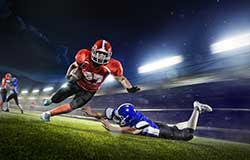Basic Cricket
The cricket court, commonly known as the wicket or track is where most of the activity takes place in cricket. The bowler released the ball from the other end, the pedestrian hit the other. Every time the eyes of all the people present - players, boxers and spectators alike - are focused on the 22-yard field.
The type of land and the length of the pitch can vary from informal games such as street cricket or volleyball cricket. For a cricket match right, however, this is what a cricket court must look like.
Dimensions and markings
The cricket court is essentially a narrow rectangle. It is 22 meters (2012 cm) long from one section to another and 3.05 meters wide. 스포츠토토 On and around those 22 yards are some markers arranged with white painted lines. A bowling alley is a straight line across the width of a pitch that passes through three sections and has one at the end of the pitch.
Also, the bruise on one end is 4 feet (1.22m) in front of the fold where it runs parallel. The jumper's legs will be placed behind the drowsiness when his bowls, and the actor must have parts of his stick or his body behind the folds, such as eyelashes, to be safe from falling. Run out or break. At the end, there are two back points at each end, 1.32 meters from the center of the pitch. They walk at right angles to the bowls and burst, and like the eyebrows, the exerciser has to have parts of his hind legs positioned to the right to bow the bow.
Pitch type
A cricket court can be made of natural or artificial components as long as it is flat. Top level cricket is usually played on clay or grassland, while other levels of cricket often use artificial pitches. Artificial gradients tend to maintain the same level of bounce and movement for the entire game. On a natural surface, however, the course will be worse than during the course of the game, especially in a five-day test match.
This usually means that the pitch will provide more assistance to the exerciser after about the 2nd or 3rd day when it evaporates. Cracking and marking will improve, meaning the ball will rotate more on the pitch or move to the side. The ground staff is responsible for the conditions of the field before the start of the game. After the match is set up, the referee takes charge of his or her fitness for the match.
This includes preventing runners and golfers from running on the course and directing ground staff to cover the course during wet weather.If the authorities consider the pitch unsafe for playing nearby (most high pitches have some pitches on the middle block, it can be used with the consent of both leaders.




Comments
Post a Comment